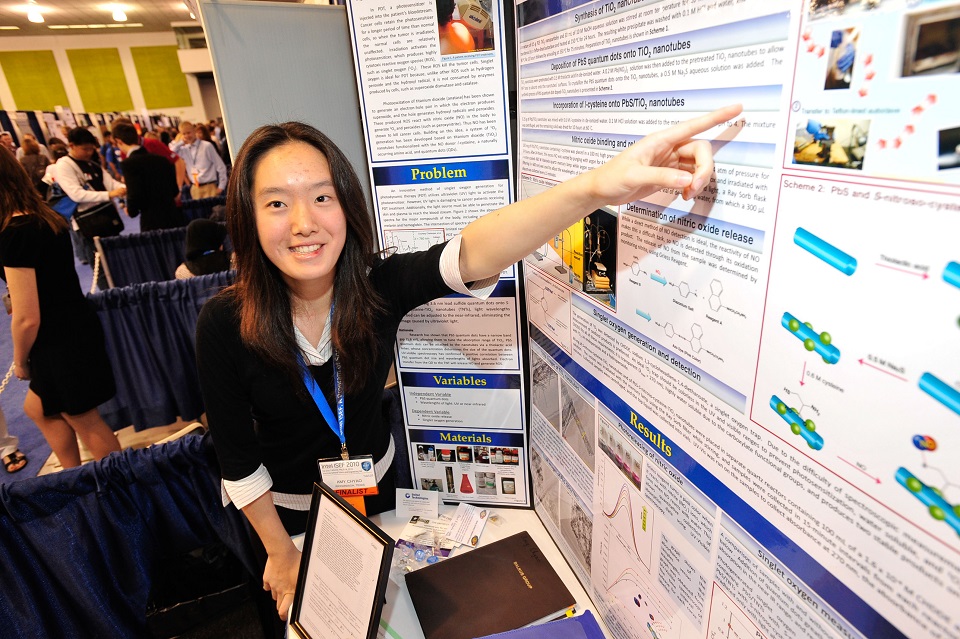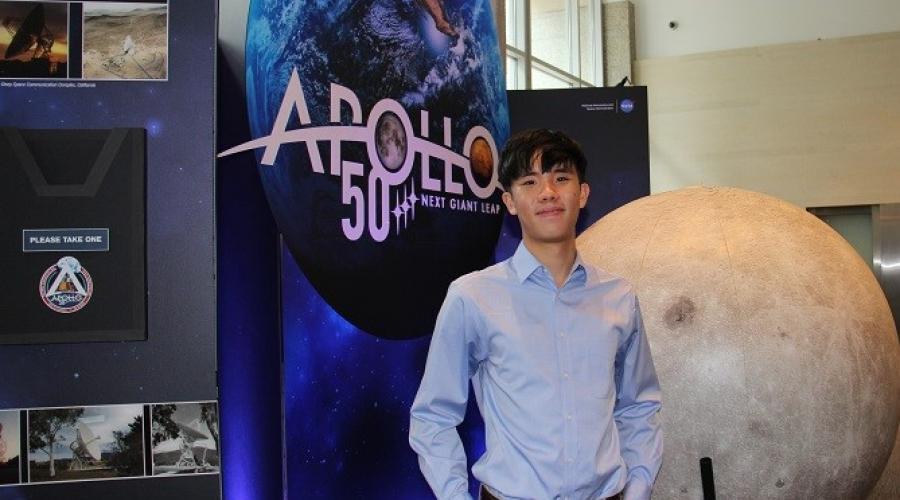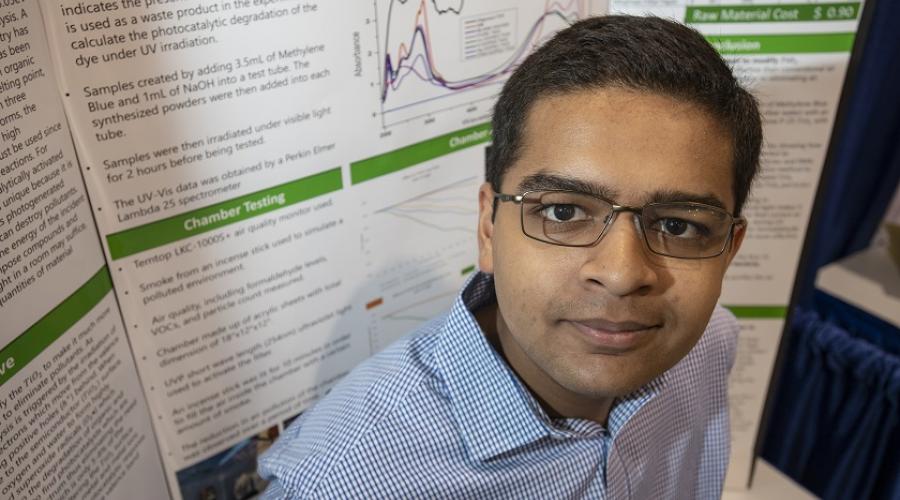Recent Intel ISEF Alum Katherine Bomkamp Now CEO of Own Company
Katherine Bomkamp competed in both the 2009 and 2010 Intel International Science and Engineering Fairs. In 2009, she received a Fourth Award in the Engineering: Materials and Bioengineering Category and in 2010 she received a Special Organization Award from the International Council on Systems Engineering. Bomkamp also recently won the Next Generation award from Popular Mechanics magazine, was the youngest person to ever present at the Royal Society of Medicine’s Summit on Innovation, was named one of Glamour Magazine’s Amazing Young Women of 2011, and has been inducted into the National Gallery for America’s Young Inventors. Below she describes the impact participating in Intel ISEF has had on her and why she volunteered at the most recent Intel ISEF held this past May.
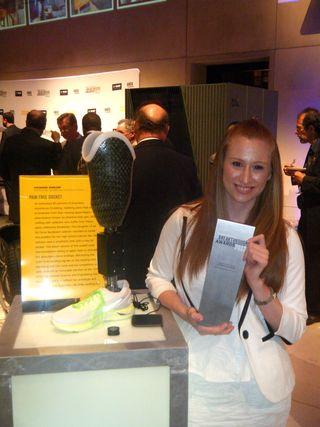
Qualifying to compete at the Intel International Science and Engineering Fair is the ultimate goal for a young researcher. You spend months (or years) in a lab, doing advanced scientific research while most kids your age are preparing for prom, and going to football games. Once you realize you’re on to something is when the race begins. There are local science fairs to win, county level fairs, state fairs, sometimes nation-wide fairs, all with the end goal of competing at Intel ISEF and showing the world what you have accomplished.
For me, being an ISEF finalist was (and still is) the most incredible experience I’ve ever had. The competition was intense, but I quickly became best friends with my competitors. I learned so much from the people around me, which not only fueled my passion for my own work, but also expanded my views of the world significantly. Competing at Intel ISEF gave me the confidence to continue to pursue my research once I had graduated high school, and since that time I’ve become a CEO and am working alongside some of the world’s leading biomedical researchers to make my product available on the market.
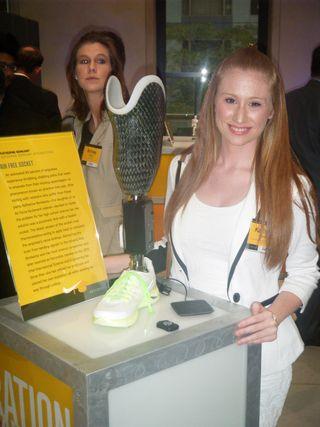
When I was sixteen, I invented, developed, and patented a holistic prosthetic device called the Pain Free Socket that has the potential to eliminate or alleviate phantom limb pain, or pain in a nonexistent limb, in amputees. I embedded the concept of thermal biofeedback, or very concentrated and controlled heat, into the prosthetic socket. This heat stimulates severed nerve endings in the residual limb, and forces the brain to focus on this heat rather then to continue to send signals and commands down to a limb that is no longer there. The product is wirelessly controlled by the user, allowing the patient to make their own pain management decisions.
I became interested in researching phantom pain after visiting Walter Reed Army Medical Center, at the time the country’s largest military hospital, with my dad who is a retired Air Force Lt. Col. I saw so many young amputees returning from Iraq and Afghanistan, and I became aware of the phantom pain that many of them were experiencing. I started looking into what phantom pain was, and quickly found that there was no medication available on the market for treatment, and most amputees are commonly prescribed antipsychotics and barbiturates, drugs that are both expensive and have a high addiction rate. For my tenth grade science project that year, I decided to do something about it.
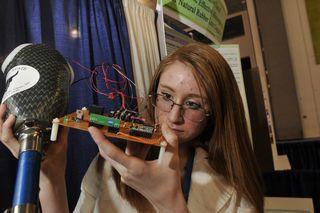
I am currently working to make the Pain Free Socket commercially available. I have prototyped the product to its third generational phase, and have been issued one U.S. patent, with another pending. In 2011, I became the CEO of my first company, Katherine Bomkamp International. Right now, my team and I are looking for the right place to begin our proof of concept testing and securing funding to move into this small-scale testing phase.
Participating in Intel ISEF and conducting my own research from a young age has affected my academic career tremendously. When you are researching, you are constantly running up against roadblocks that you have to overcome in order to move forward. You have to innovate your way around the problem while maintaining the overall functionality of your work. I’ve been able to apply this way of thinking not only in the lab, but also in my classes and how I view the world’s problems overall. As for my future career, I’m not entirely sure what I’ll be doing. I know the kind of atmosphere I want to be working in, but I feel that choosing a specific path at this time would limit the opportunities that may become available to me in the future.
When I heard that Intel ISEF was coming to Pittsburgh, I knew I wanted to get my school, West Virginia University, involved in this experience. I put together a team of our faculty to be Grand Award judges and a group of students to volunteer at the event. My Intel ISEF experience means the world to me, and I know that part of why it is so meaningful is because of all the hard work that goes on behind the scenes by volunteers and the Society for Science & the Public staff. I wanted to do anything I could to make this experience just as memorable for the finalists this year.
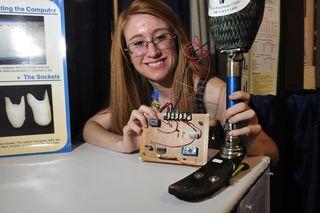
My advice for students interested in science is to be hands on. If you are interested in a particular topic or specialty, find an expert in the field who can mentor you, and from there get involved! You would definitely be surprised how many universities and professors are willing to let young students come into their labs to conduct their own research, it’s just a matter of finding the right fit.
I would absolutely encourage everyone interested to volunteer at Intel ISEF. The atmosphere is indescribable, and I know everyone who attends Intel ISEF (even just for Public Day) will leave feeling inspired and incredibly optimistic about this generation of young people.
